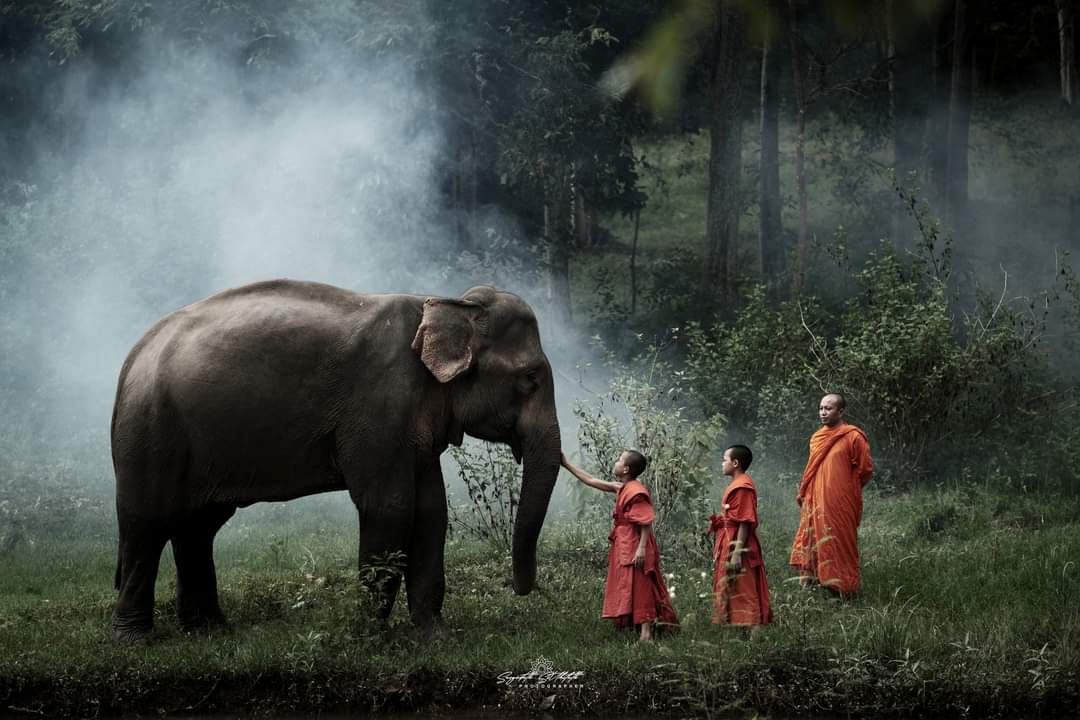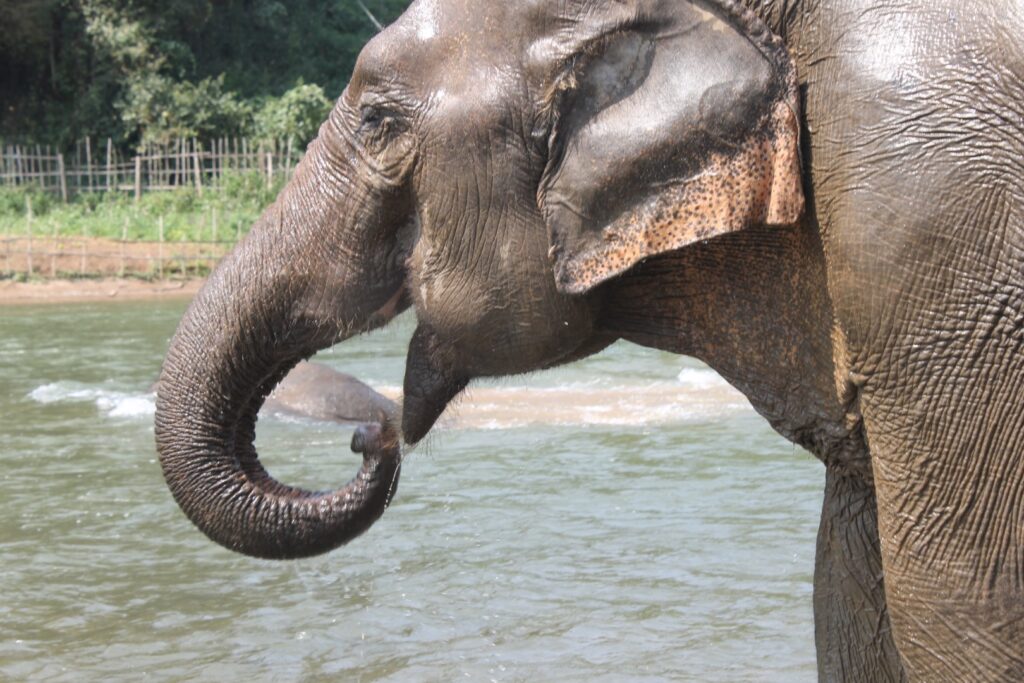Laos is still referred to as the country of a million elephants, but today there are only about 800 left in the country, of which only half still exist in the wild.
The elephant is an iconic symbol of Laos and the animals are a big tourist draw, even though the population is dwindling rapidly.
The government, together with Lao and international organisations, is very concerned about the conservation of wildlife in Laos, including elephants.
In August, MandaLao Elephant Conservation (d/b/a MuangLa Elephant Conservation Tours Company, Ltd.), was granted a concession, and oversight and management rights to more than 2,000 hectares of land near MuangLa in Oudomxay province, where wild elephants still roam free. Approved by various branches of the Oudomxay government, and signed by Governor Bounkhong Lajiemphone, this signifies an important advancement for elephants, for villagers living near the elephants, and for tourism in Oudomxay.
Called “Better Futures for Laos’ Elephants” (BFLE), the endeavour will focus on increasing the population and genetic diversity of wild elephants living in the area, while ensuring that human-elephant conflict and illegal wildlife trade are reduced.
It will also work with community members and hill tribes to manage, preserve and protect elephants and their habitats; and offer eco-tourism, academic and volunteer opportunities to support sustainable programme funding and economic growth for the villagers and region.
Here is a look at some of the key elements:
Addressing Human-Elephant Conflict
More and more often as people encroach on elephants’ natural habitats, conflicts arise. This can include elephants raiding villagers’ crops and close encounters between elephants and humans, which can cause both fear and injury to both. The BFLE project will:
Recruit and train villagers to serve on 6-member Ranger Teams in three villages (Ban Houachai, Ban Pangsom and Ban Phouthen). The teams will patrol the area, protect elephants from illegal poaching, and alert villagers when elephants are nearby. Some electric fences will be built and warning/alarm protocols put in place;
Villagers will be encouraged to plant different crops, which can be sold for profit in markets, but that elephants don’t like to eat and actively avoid; and
camera traps will be set up to determine where the elephants are at any given time, their numbers, herd makeup and health status, and to raise awareness of other species in the vicinity. Right now, we know that besides elephants, gaur, sambar, muntjac, bears, macaques, civets, porcupines, pangolins, wild cats, badgers and other species also live there.
To Ensure a Sustainable Source of Income, BFLE will:
Offer volunteer opportunities and accommodation packages for guests who wish to learn about and participate in wild elephant-related conservation work, meet with field and ranger teams, and trek into elephant habitat areas to enjoy both the majestic mountain views and potentially see wild elephants from a safe, specially built observation tower. Guest lodging will include camping/tent accommodation and a small restaurant will offer local fare.
Offer tours in which captive elephants walk with guests through the beautiful streams and jungles of the area. Much like tours offered at MandaLao Elephant Conservation, the elephants will live the best lives possible when in captivity – eating a variety of nutritious and delicious foods, attended to by a professional vet, having their own mahout who is trained in positive reinforcement techniques, living unchained in areas where they can roam, and being with their herd.
To Enhance Hill Tribes’ Economic Prospects, in Addition to Crop Protection and New Employment Opportunities, BFLE will:
Provide income generating opportunities for Akha and Hmong villagers living in the immediate area, by setting up a gift shop where guests can come and purchase local wares, including weavings, hats and baskets. Small programmes like these can make a big difference and bring income to distressed and poor villages, while highlighting the artistry and talents of local people.
The BFLE programme is being headed by one of Laos’s most respected wild elephant experts, Khamkhoun Khounebouline. Khamkhoun has written several foundational reports and articles that have provided essential information and data about wild elephants in Laos; coordinated and wrote the National Elephant Conservation Action Plan (2022-2032); and worked for many years with WWF-Laos in Vientiane.
His son, Phounmee Khounboline, who has just graduated with a B.S. in Wildlife Biology from the Faculty of Natural Sciences, National University of Laos, will work closely with him.
In addition, Prasop Tipprasert, one of Thailand’s most esteemed elephant experts who has worked with captive elephants in Thailand and Laos for over 40 years, will lead the re-wilding efforts, including “re-training” elephants who have been living in captivity, to help them regain the innate skills necessary for them to survive in the wild.
Michael Vogler, founder and owner of MandaLao Elephant Conservation in Luang Prabang, which is recognised as one of the most ethical captive elephant centres in Southeast Asia, will also be integrally involved with programme development, including overseeing volunteer programmes, engaging donors and rescuing elephants.
All respect and gratitude to the Governor of Oudomxay, the Department of Agriculture and Forestry, and the Department of Planning and Investment for thinking so creatively and broadly about better futures for local people and protecting Laos’ treasured national animal – elephants.
By Vientiane Times Reporters

